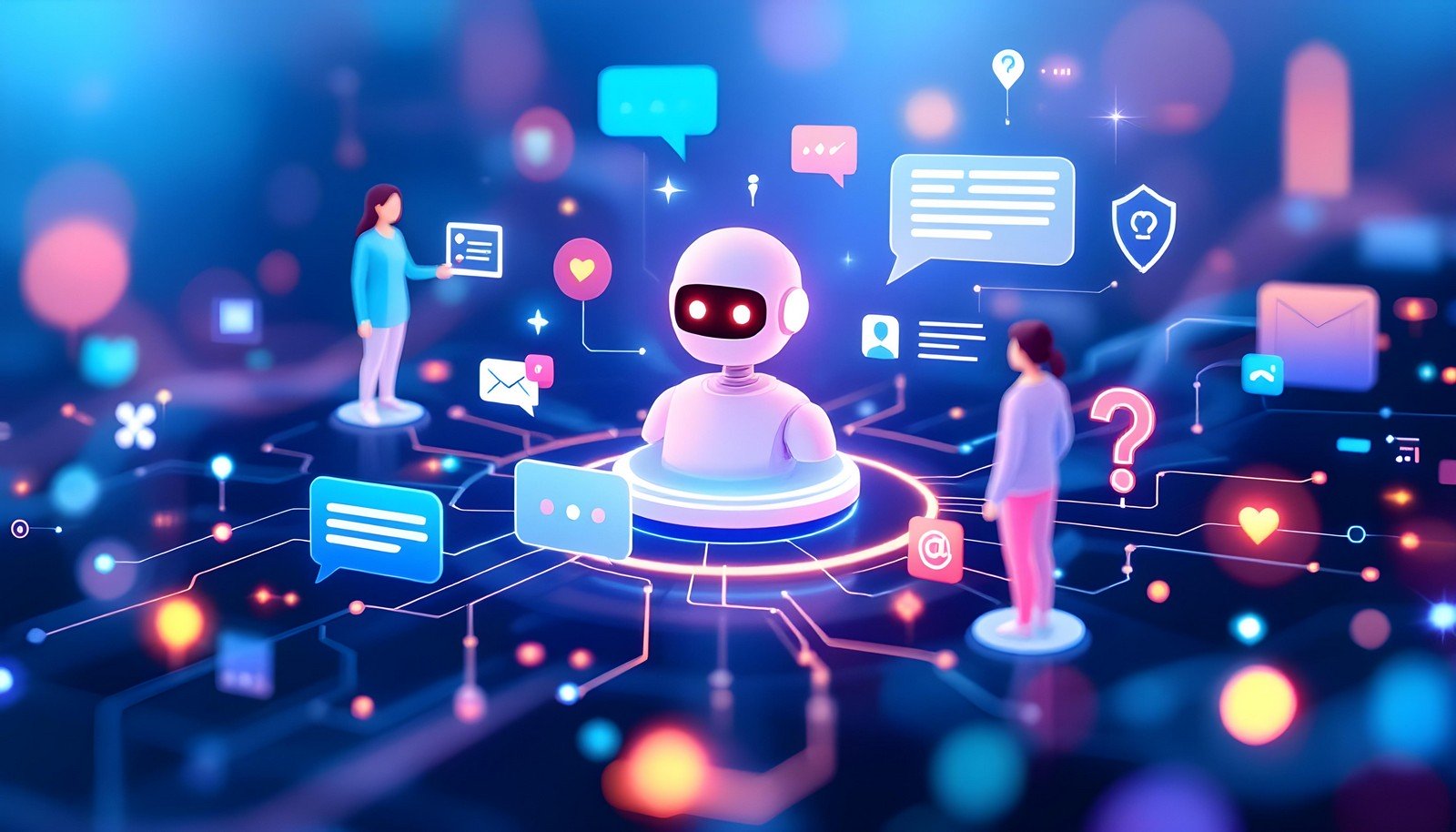Chatbot

Quick Navigation:
- Chatbot Definition
- Chatbot Explained Easy
- Chatbot Origin
- Chatbot Etymology
- Chatbot Usage Trends
- Chatbot Usage
- Chatbot Examples in Context
- Chatbot FAQ
- Chatbot Related Words
Chatbot Definition
A chatbot is a software application designed to simulate human conversation, either through text or voice interactions, with the primary purpose of automating responses to user inquiries. Leveraging natural language processing (NLP) and sometimes artificial intelligence (AI), chatbots can interpret user intent, retrieve information, and provide relevant responses. Advanced chatbots may use machine learning (ML) to improve their responses over time and can be integrated into websites, mobile apps, and messaging platforms to offer customer service, guidance, or general information.
Chatbot Explained Easy
Imagine a chatbot as a robot that can talk to you on your computer or phone. It’s like texting a friend, except the friend is a computer program that knows how to answer questions and help you find what you need. Some chatbots are super smart and can learn new things over time, while others just know a set of answers and help you with those.
Chatbot Origin
Chatbots have their roots in the 1960s when early computer scientists explored the idea of simulating conversations with machines. The first notable example was ELIZA, a program created in 1966 that mimicked a therapist by rephrasing users' statements as questions. Since then, advancements in computing and AI have transformed chatbots into sophisticated virtual assistants that are now widely used across industries.
Chatbot Etymology
The term "chatbot" is a combination of "chat" (indicating informal, conversational exchange) and "bot," short for "robot," representing a machine that performs tasks automatically.
Chatbot Usage Trends
Chatbots have become increasingly popular due to the demand for efficient, round-the-clock customer service and the rise of AI capabilities. Businesses in sectors like retail, healthcare, finance, and education frequently use chatbots to assist customers and manage inquiries. Additionally, the adoption of chatbots has grown with the integration of AI-driven voice assistants, which have enhanced the conversational quality and scope of these systems. In recent years, as chatbot technology advances, chatbots have shifted from basic FAQ handlers to intelligent assistants capable of complex interactions.
Chatbot Usage
- Formal/Technical Tagging: Virtual Assistant, Conversational AI, NLP-driven Bot, Customer Support Bot
- Typical Collocations: chatbot integration, chatbot functionality, interactive chatbot, AI chatbot, chatbot conversation, customer service chatbot
Chatbot Examples in Context
- "Our website offers a chatbot that can help answer common questions about our products."
- "She interacted with a chatbot on her bank's app to check her account balance."
- "Many customer support teams use a chatbot to handle repetitive inquiries."
- "The chatbot provided guidance on troubleshooting steps when I had issues with my device."
Chatbot FAQ
- What is a chatbot?
A chatbot is software designed to interact with users and provide automated responses. - How does a chatbot work?
It uses NLP to understand questions and provide responses based on a set of rules or AI learning. - Can chatbots understand multiple languages?
Yes, many advanced chatbots support multiple languages. - Are chatbots secure?
Yes, chatbots are generally designed with security in mind, but it’s important to use verified systems. - What are some uses of chatbots?
Chatbots assist in customer support, scheduling, ordering, and more. - Do chatbots learn over time?
AI-powered chatbots can learn and improve based on interactions. - Can I make my own chatbot?
Yes, many platforms offer tools for creating custom chatbots. - What’s the difference between a chatbot and a virtual assistant?
Virtual assistants are generally more advanced, often supporting voice commands and complex tasks. - How do chatbots help businesses?
They provide efficient, 24/7 customer support and handle common inquiries. - What are popular chatbot platforms?
Some popular platforms include Dialogflow, Microsoft Bot Framework, and ChatGPT API.
Chatbot Related Words
- Categories/Topics: Artificial Intelligence, Natural Language Processing, Customer Support, Automation
- Word Families: chat, chatting, chatty, bot, robotics, automation
Did you know?
The first chatbot, ELIZA, was developed by Joseph Weizenbaum in 1966 and was programmed to simulate a psychotherapist. Surprisingly, many users felt emotionally connected to ELIZA, showing how even simple machines can create a sense of understanding and empathy in users—a foundation that modern chatbots build on to improve user experience.
PicDictionary.com is an online dictionary in pictures. If you have questions or suggestions, please reach out to us on WhatsApp or Twitter.Authors | Arjun Vishnu | @ArjunAndVishnu

I am Vishnu. I like AI, Linux, Single Board Computers, and Cloud Computing. I create the web & video content, and I also write for popular websites.
My younger brother, Arjun handles image & video editing. Together, we run a YouTube Channel that's focused on reviewing gadgets and explaining technology.



Comments powered by CComment